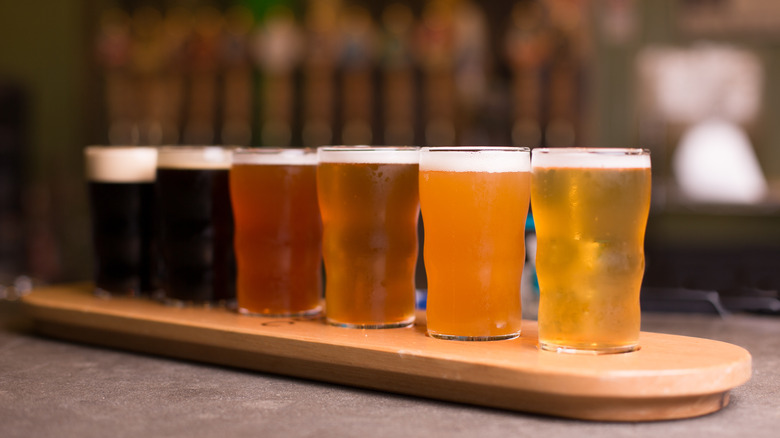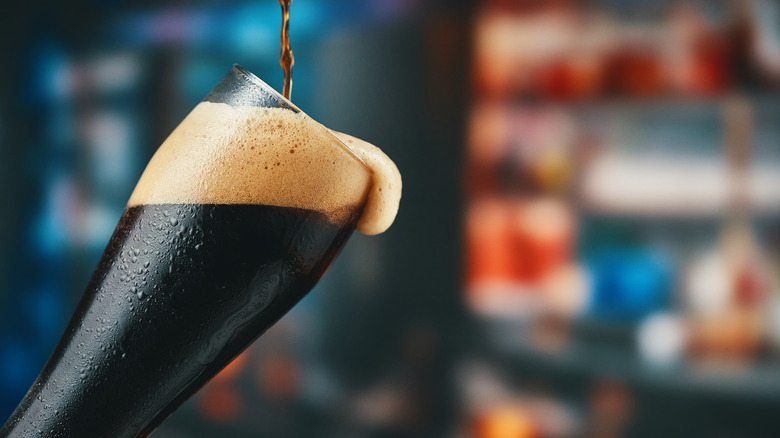Choosing The Best Beer To Cook With Your Meat Depends On What You're Making
Humans have been making beer for a very, very long time — it's been around for about 5,000 years since it was created in ancient Mesopotamia. It's no surprise, then, that beer comes in so many different forms, with colors ranging from a light gold to almost black, made from ingredients such as barley, rice, and corn.
Those various types of beer, unsurprisingly, have various effects when you cook with them. This makes sense; you're not going to use corn and rice interchangeably and expect the same results, so neither should you expect to get the same outcome from beers made from those ingredients. The trick is in knowing which beers go well with which foods, because some of those pairings are less than ideal. Each beer's flavor profile matches that of certain foods, and it's important to know which goes with which.
One thing is universal, though — don't try to save money by using the cheapest, shoddiest product you can find. Cook with beers you would drink — it absolutely does make a difference.
Golden and dark beers each have their uses
Fried foods are the easiest to figure out; you want to use lighter beers. The reason for this is twofold. First, deep-fried foods tend to be heavier, so cooking them with a lighter beer makes them less likely to overwhelm you.
Second, when it comes to something like fish and chips, you'd already be using seltzer in the recipe for its carbonation. Lighter beers, including lagers and pilsners, are a natural fit because they're more highly carbonated. As a bonus, they tend to make fried foods look a delicious honey brown, whereas dark beers can make batter an upsetting shade of gray.
Dark beers do have their uses, though. In particular, porters and stouts are great in beef or lamb stews; they impart a rich, earthy flavor and aroma. It's the same principle at play in why red wine, which is often used the same way in red meat stews, pairs so well with steak. And if you're baking with chocolate and you want to use beer, you'll want a dark beer for it. A light, fizzy beer will create a flavor mashup that doesn't mix nearly as well.
You should also make use of wheat beers and dessert beers
You don't want a dark beer for chicken or seafood, though. The strong, earthy flavors tend to overwhelm those proteins. Instead, go with a wheat beer, whose mild, mellow flavors pair well with the more delicate taste of poultry or fish. This entire principle holds true for marinades, too: wheat beers with chicken or seafood marinades, dark beers for steak marinades.
There's another kind of beer worth mentioning here, too: fruit beers. You might think there's no good way to use them in cooking, but you'd be wrong. Fruit beers are great for making desserts. In particular, there are a lot of recipes that call for Belgian beers, such as Hefeweizens and Tripels, whose citrus-y notes match well with lemon-flavored desserts.
Whatever beer you personally enjoy, you can probably find a use for it in cooking. Well ... except for IPAs. You probably shouldn't cook with IPAs at all.


